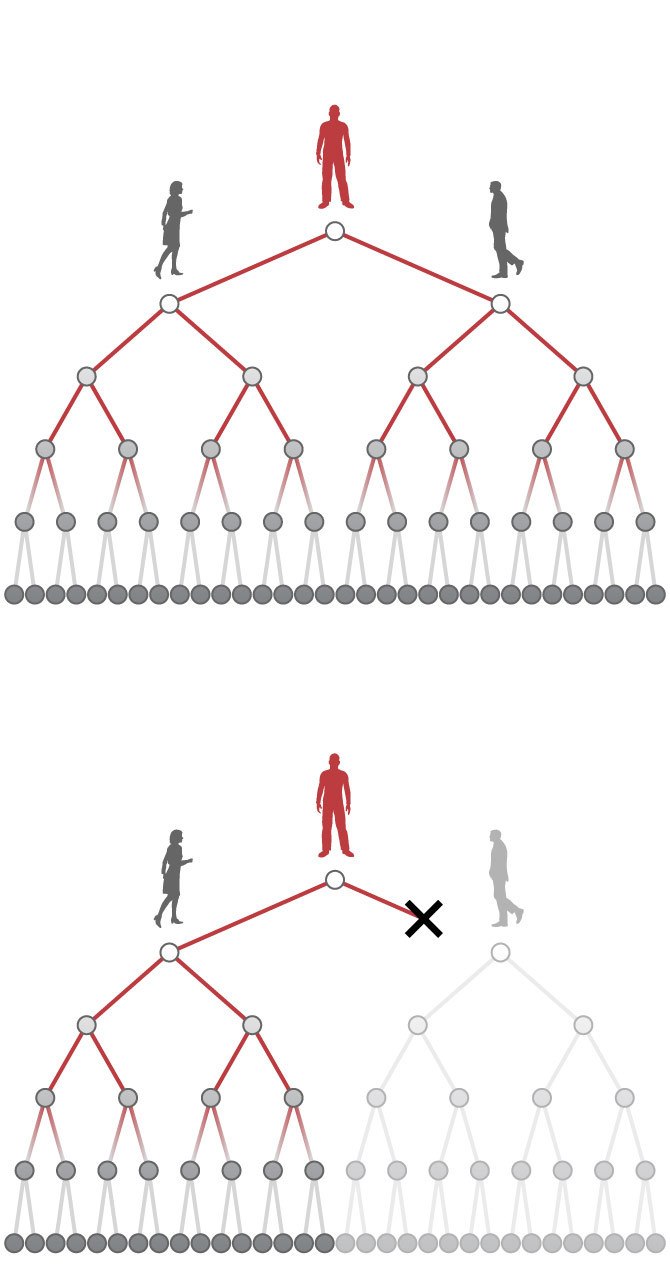We currently have a choice on what we do in allowing or restricting the novel coronavirus from 2019 to spread amongst our community. What is right and wrong about the advice out there?
Social distancing works. Even though the World Health Organisation (WHO) advised in February 2020 that the virus was not airborne, it has been shown in the New England Journal of Medicine to circulate in the air for at least 3 hours so it could be spread by talking to someone close to you for some time, not just if they sneeze or cough. With a sneeze, droplets that can carry the virus can spread up to 8m as researched recently by Lydia Bourouiba in the Journal of American Medical Association.
So standing 1.5 metres away from each other lowers the risk of transmission of the virus, but why is that important? Well the virus spreads to approximately 2.79 people (R0 value) by every person it infects in normal life. That becomes a game of compounding such as the image below. You can see that if you have the virus and manage to only spread it to 1 person instead of 2 then it makes a huge difference (and the isolation measures we are also taking aim to stop it spread to either person in the image below).

The estimates by the social distancing research done at the University of Sydney are that:
If 90% of people socially distance themselves it will take 3 months to control the spread of the virus in Australia;
If we have 80% social distancing it will take 4 months to control the spread but;
If there is 70% or less people practicing social distancing, then the virus cannot be controlled.
It appears we are getting the right results with the numbers of infection reported by the government. You can even see the numbers of infections per suburb in NSW at this link.
The next point about masks is a big one as there is conflicting news. A 27th of March scientific brief from the World Health Organization (WHO) states that aerosol transmission “may be possible in specific circumstances and settings that generate aerosols,” such as when severely ill patients are intubated with a breathing tube. However, the WHO experts say, an analysis of more than 75,000 coronavirus cases in China revealed no cases of airborne transmission. This has led the world to not use masks in their populations however when you look at this graph, you can see the populations who use masks have much less transmission.

The University of Nebraska Medical Centre research by Joshua Santarpia et al showed that the novel coronavirus from Wuhan, China can spread through aerosols (not just droplets from coughs or sneezes). Considering there are a significant amount of infected individuals who are not symptomatic but can shed the virus while talking, it is becoming consensus that masks will prevent some of this transmission.
In coming weeks we expect you will see the WHO correct the advice they were given about not needing to wear masks. If you start to wear masks, just make sure the masks you wear are not counterfeit or faulty as there are reports from Australian Border Force of $1.2 million dollars of counterfeit or faulty masks from China.
